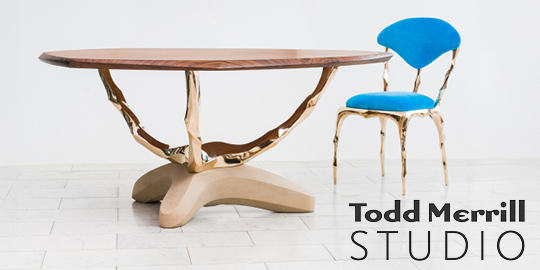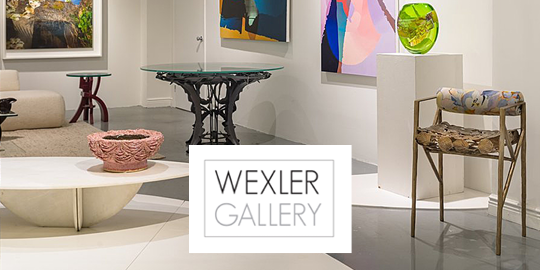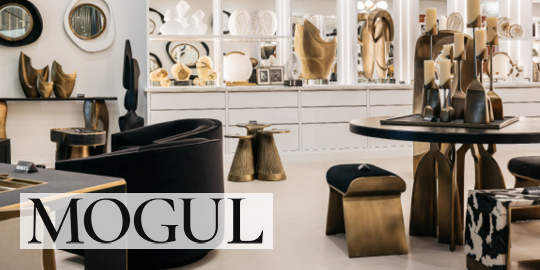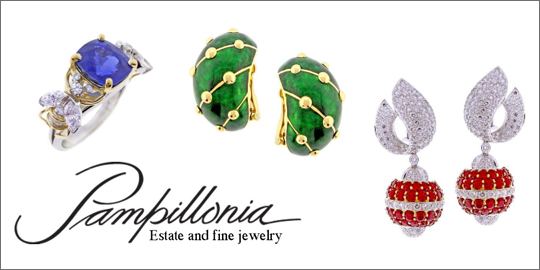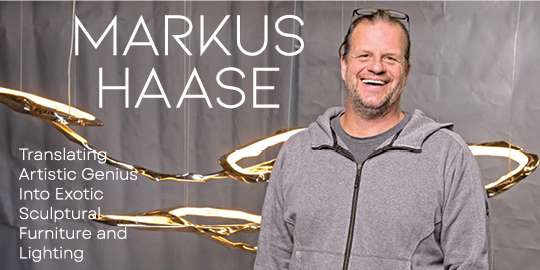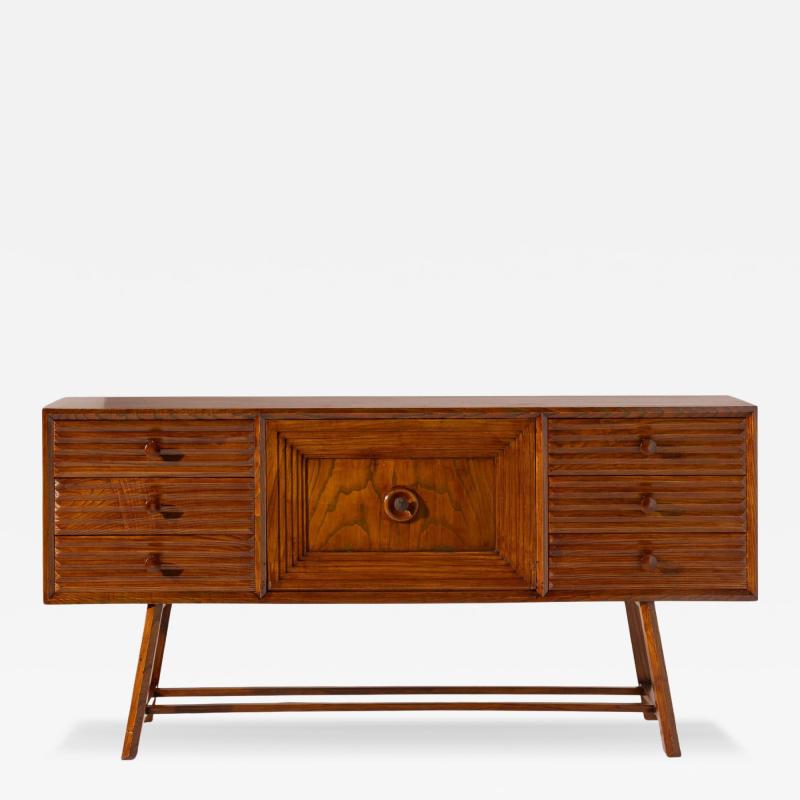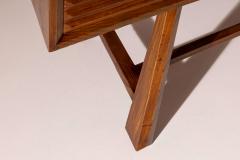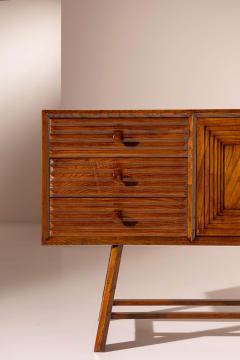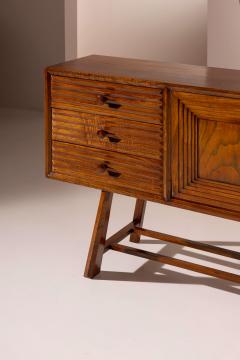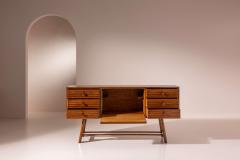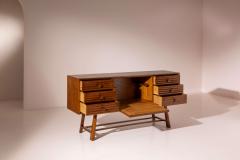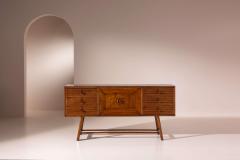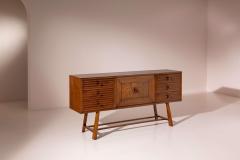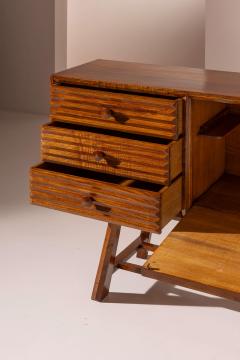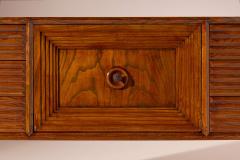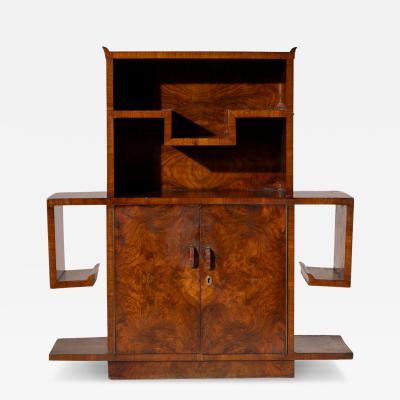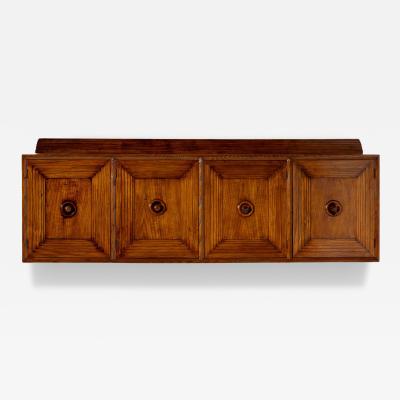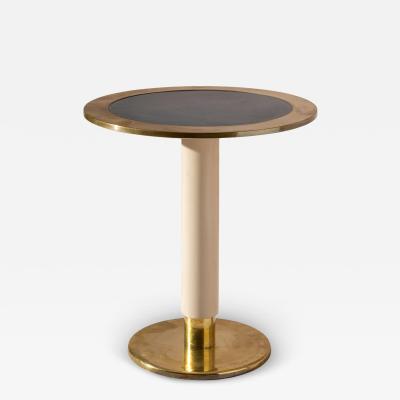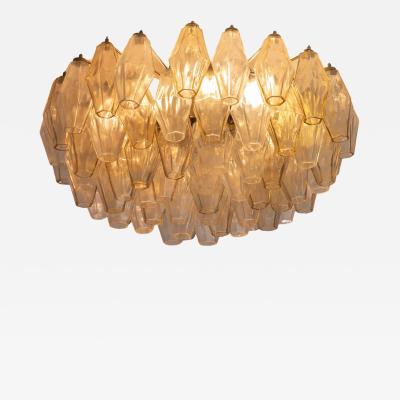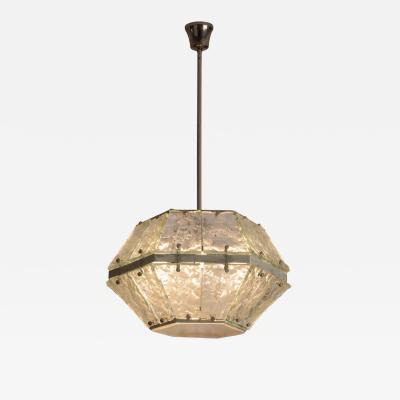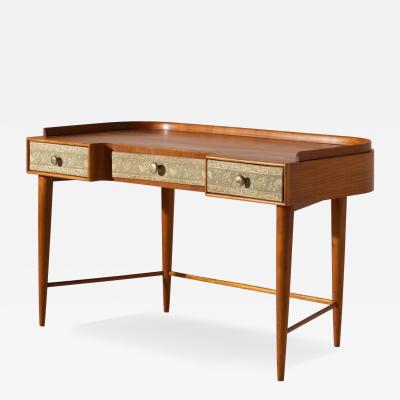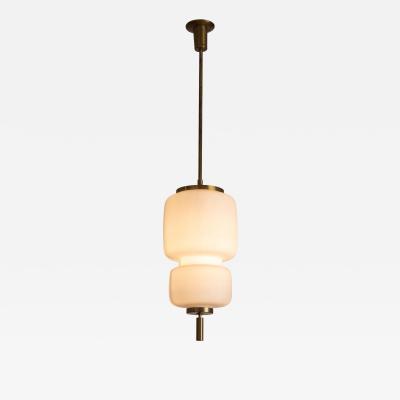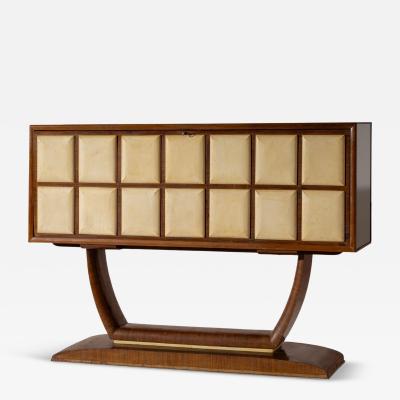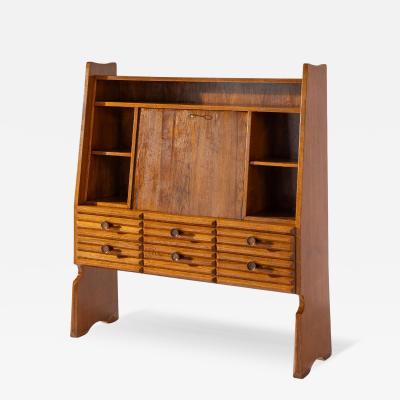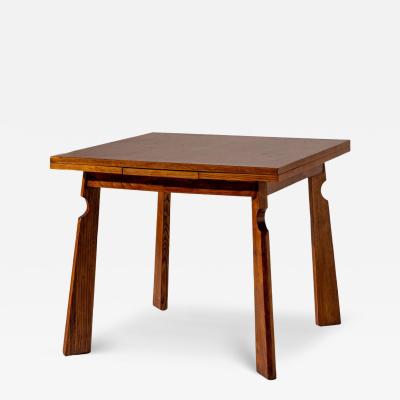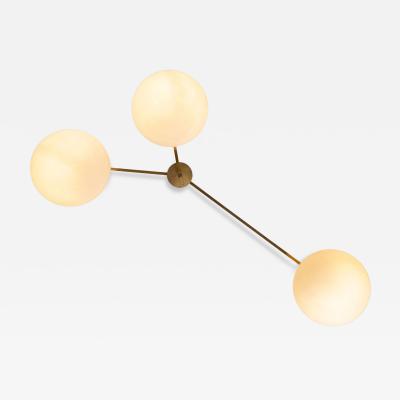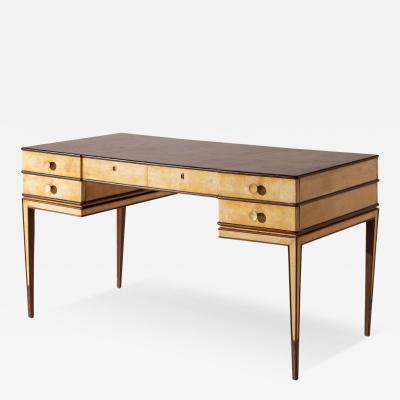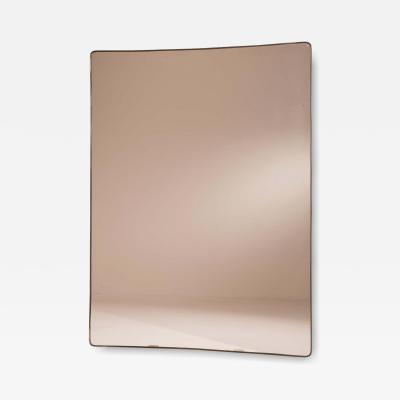A mid-century Italian sideboard in chestnut wood with drawers and drop-down door, decorated drawer fronts, Italy, 1950s
This Italian sideboard from the mid-20th century reads like a testament to a precise historical moment. Built between the 1940s and 1950s, it captures the very transition of evolving tastes. Furniture conceived during such turning points is especially compelling, as it holds within it the tension of two different—and at times opposing—design impulses.
In this sideboard, one can clearly see the legacy of Art Deco design, especially in the overall volume and structure. The drop-down door at the center acts almost like a frame—an architectural fulcrum for the rational, coherent, and rigorous lines that are typical of the 1940s.
Yet, if we look closer, details begin to reveal the emergence of a new stylistic direction. It may not yet be conceptually defined, but it is certainly perceptible—almost instinctively. Those tall, tapered legs, slightly splayed and connected by slender stretchers—what are they, if not a sign of something about to be born? A nascent form that we now recognize as mid-century design—an aesthetic shaped and nourished by the optimism and energy of the economic boom that would soon follow?
At the time this piece was made, these were likely just unconscious intuitions—tentative, perhaps even naive. But today, as beneficiaries of historical hindsight, we are able to view it through a retrospective lens that enhances our appreciation. This is the true joy of collecting: to value a piece not only for its lines and craftsmanship, but also for its historical and interpretive depth.
Stepping down from the heights of this line of thought to a more pragmatic level, it’s worth noting the beautifully decorated drawer fronts. A series of narrow horizontal slats creates a fluted, "grissinato" effect—a motif that characterizes many Italian furnishings from the 20th century. It remains admired and widely imitated today. But when seen on a newly made piece, the effect can feel flat and lifeless. Discovering it instead on an original piece from the period means engaging directly with the best of what that era had to offer—an era that, despite its social and political uncertainties, gave rise (in a paradoxical twist of fate) to one of the most remarkable heights of European design history.
Dimensions: 180 cm (W) x 43 cm (D) x 89 cm (H)
Inches: 70.9" (W) x 16.9" (D) x 35" (H)





